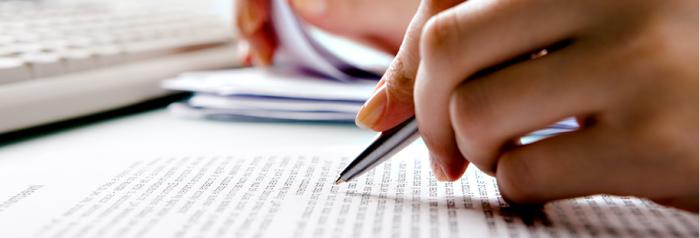The need for documentary confirmation of decisions made is needed in situations where they are taken collectively. Most often, to record the course of an event, this type of data recording is used as a protocol.
The word "protocol" has several meanings - it can be both the established procedure for action in a particular situation, and a properly executed official document containing data on the sequential course of discussion, debate and decision-making at meetings and conferences, conferences and meetings. It must be borne in mind that it has several forms that are different in their purpose. The minutes of the meeting of residents is a document of a slightly different category than, for example, the protocol of the investigating authorities or other
supervisory authority.Meetings of permanent / temporary collegial communities (committees, meetings of shareholders, residents, board of directors) are subject to mandatory documentation. Depending on the decision made by the chairman of the organization or group, the minutes of the meeting can be kept in full (thorough recording of speeches, debates, questions and answers) or in abridged form. As a rule, during a meeting, the secretary or other person in charge keeps a record of everything that happens, collects related materials provided by the participants, and then brings them together into a single document.
As for the requirements for this official paper, they are indicated in the state standard governing the correct procedure for registration. So, in the minutes of the meeting of the owners of tenants or representatives of other groups and organizations, in addition to the name of the document and organization, the date of the event and the agenda, the information on the chairman, secretary and attendees must be indicated.
Briefly, the outline of the information is as follows: listened - spoke (and) - decided / decided. The accuracy of the data presented is endorsed by the signature of the chairman and secretary. If necessary, participants in the meeting can receive both a full copy of the minutes of the meeting, and an extract from any part of it.
Some nuances of informational data are documented reflecting the course of collective meetings of the population living in apartment buildings. In this case, data on the form of the event (the actual gathering of people or absentee voting on agenda items), the actual address and area of the indicated detached object, the number of votes present and owned by them must be entered in the minutes of the meeting of homeowners.

In addition, a mandatory annex to the document is a surname list of participants (or their representatives) indicating the number of the apartment in the possession. If the opinion of the residents was obtained in absentia, then the additional list should contain not only information about the person, but also about his decisions on all issues on the agenda. It should also include information about the document confirming the right of ownership or possession of a specific room in the house, as well as the will of each citizen on the items indicated on the agenda in understandable and accepted forms (I agree, disagree, abstained). Only under this condition will the minutes of the meeting of tenants have legal force.